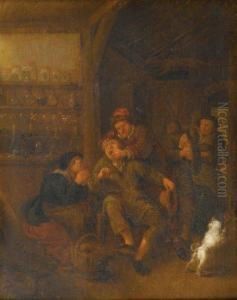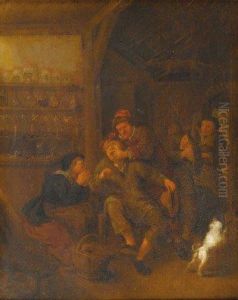Jan Molinaer Paintings
Jan Molinaer, also known as Jan Miense Molenaer, was a Dutch Golden Age painter born in the year 1600 in Haarlem, Netherlands. His exact birthdate is not known, but he was baptized on August 31, 1600. He was a contemporary of other famed Dutch artists such as Frans Hals and Pieter de Hooch and is best known for his genre scenes, portraits, and history paintings. Molinaer’s works often depicted everyday life and were characterized by a robust sense of humor and keen observation of human behavior.
Molinaer trained in Haarlem, which was then a vibrant artistic center, and he was influenced by the works of the earlier Haarlem painter Dirck Hals, among others. He became a member of the Haarlem Guild of Saint Luke in 1624 and later served as its dean in 1633 and 1648. Jan was married to Judith Leyster, herself a talented painter and one of the few recognized female artists of the time. The couple had five children, and they often collaborated on paintings or influenced each other's work.
In his paintings, Molinaer typically employed a warm color palette and demonstrated a skillful use of chiaroscuro to highlight the narratives of his scenes. His subjects ranged from peasants in taverns to musicians, card players, and families. One of his most famous works is 'The Five Senses,' a series of paintings representing taste, sight, touch, hearing, and smell. He also painted religious and mythological subjects, but these were less common in his oeuvre.
Molinaer's work fell into relative obscurity after his death in 1668, and for many years, his paintings were often attributed to other artists. It was not until the 20th century that his contributions to Dutch Golden Age painting began to be reassessed and appreciated. His works are now recognized for their lively depiction of human folly and their insightful portrayal of 17th-century Dutch society. Today, Molinaer's paintings can be found in numerous prestigious museums and art collections around the world, contributing to our understanding of the period's cultural and artistic practices.

